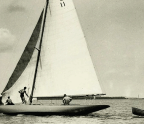

One of the benefits of having an alloy boat is the ability to weld new pieces to it, to make modifications and to fit accessories that are as strong as the original construction. This allows major layout changes, even structural changes to the hull, without in any way reducing the overall integrity of the hull.
However, this is not always desirable or even feasible. The process of welding creates heat and sparks, which damage or destroy paintwork and plastic fittings. The current from the welder can fry electronics, and it is not always practical to remove or isolate every electrical device before starting to weld. Many boatyards prohibit welding on site without stringent health and safety protocols. And lastly, quality welding can be difficult on older aluminium with extensive corrosion.
Apart from making specific structural changes to the hull, in many cases the full strength of a weld may not be needed.




